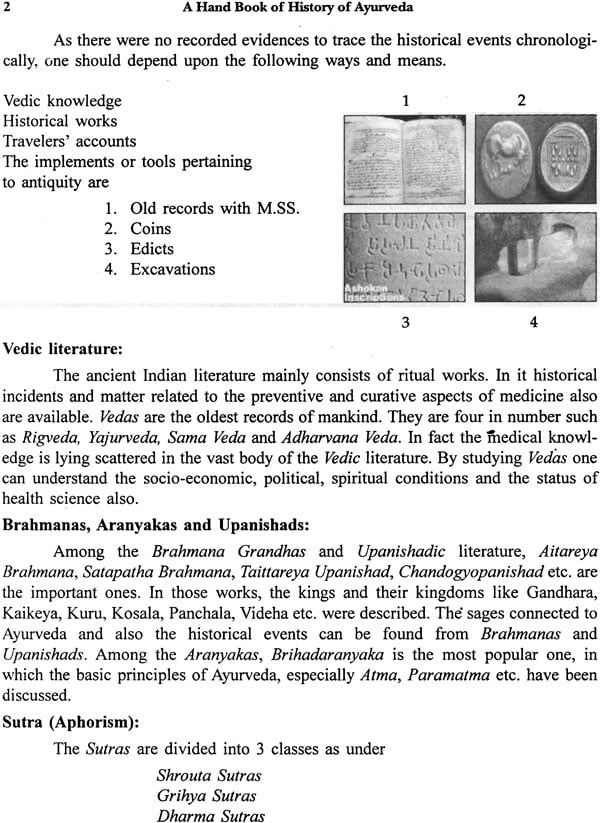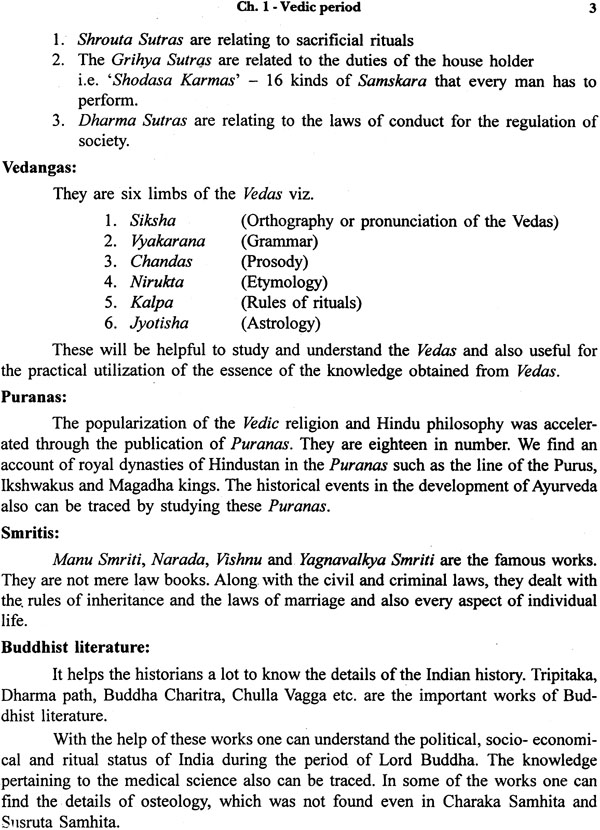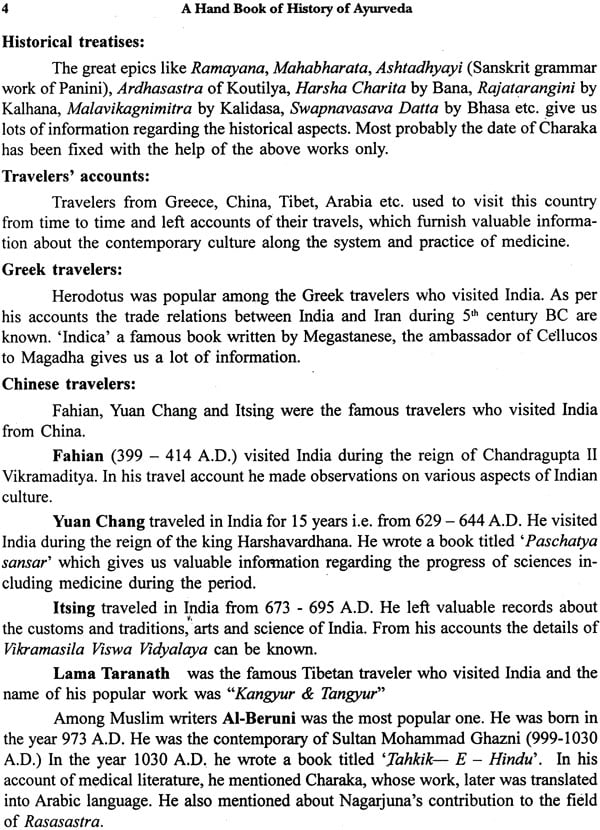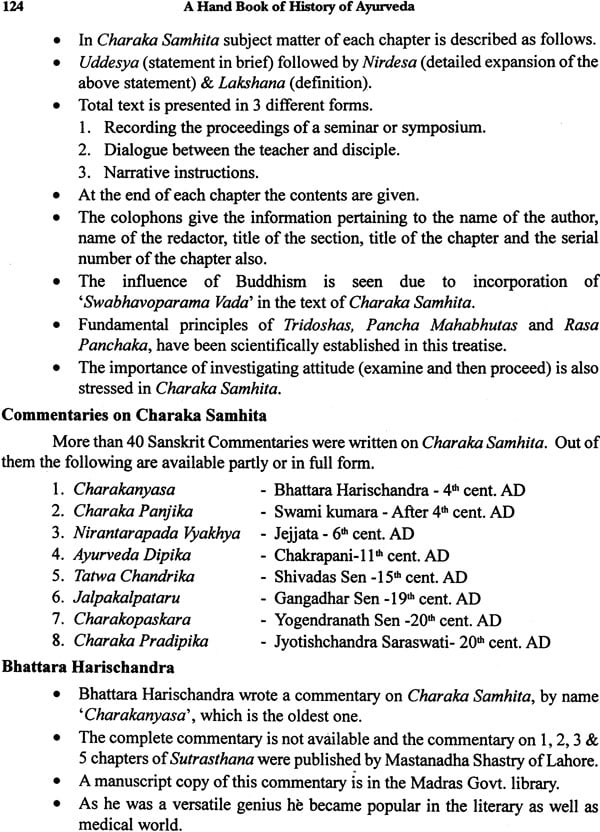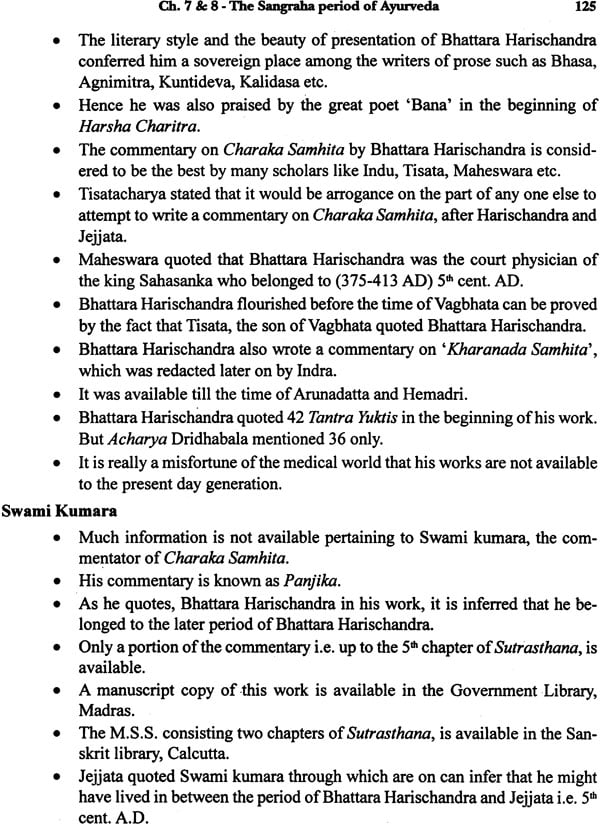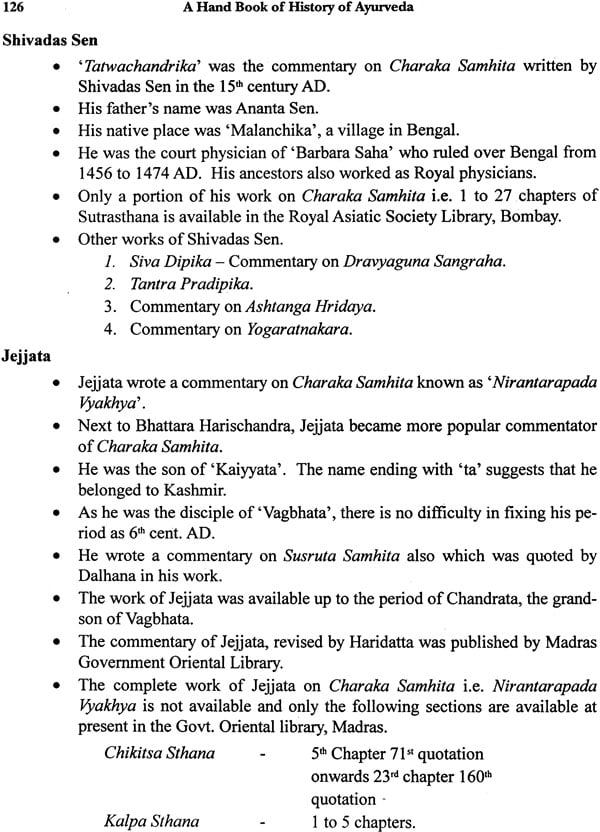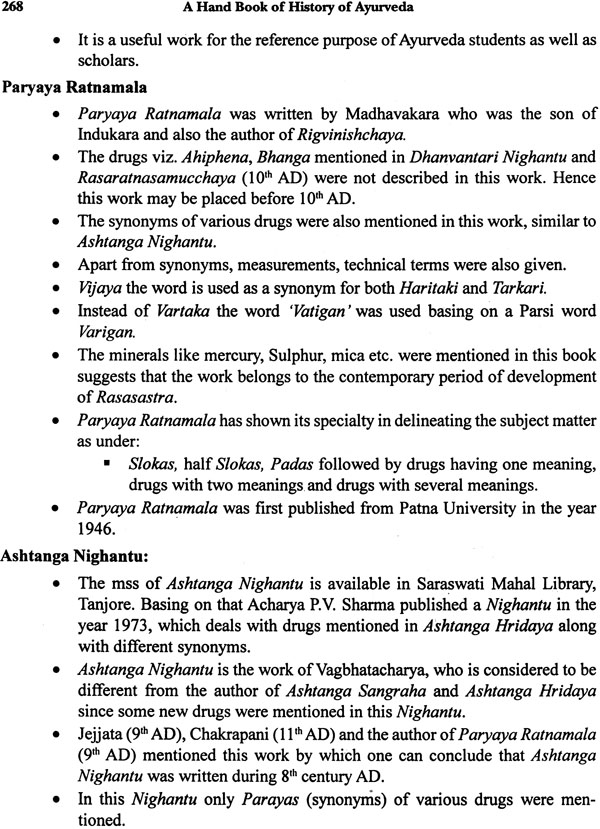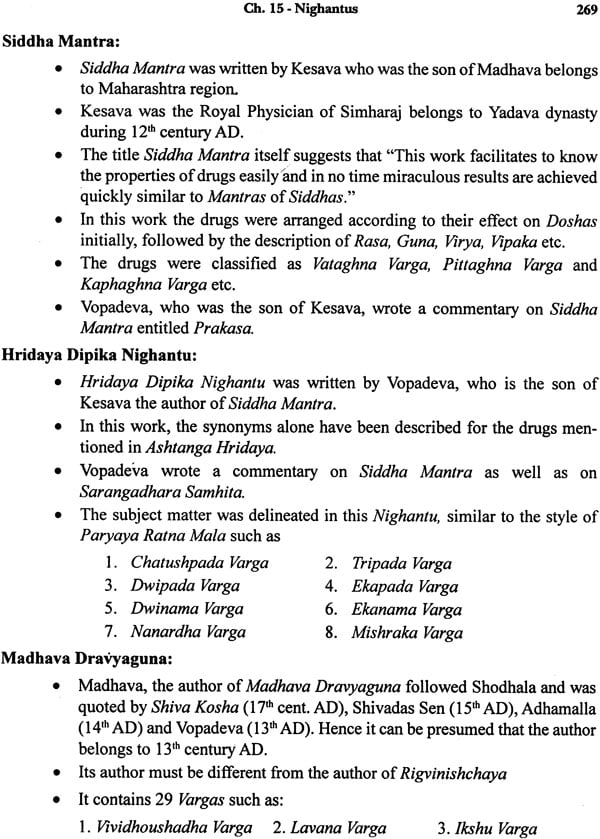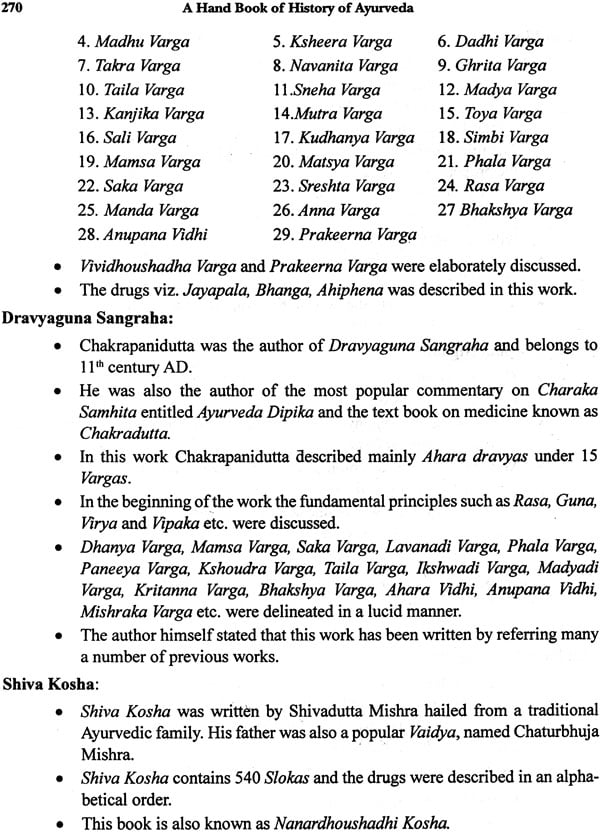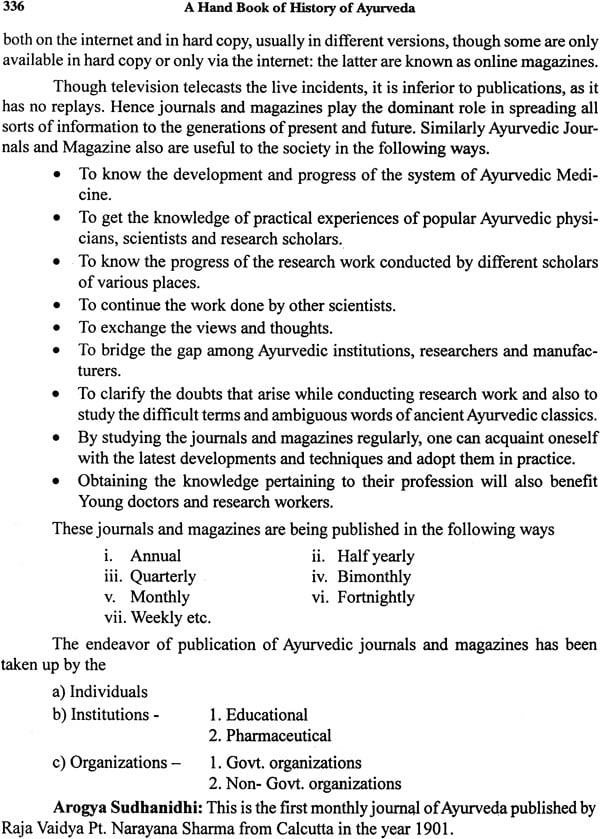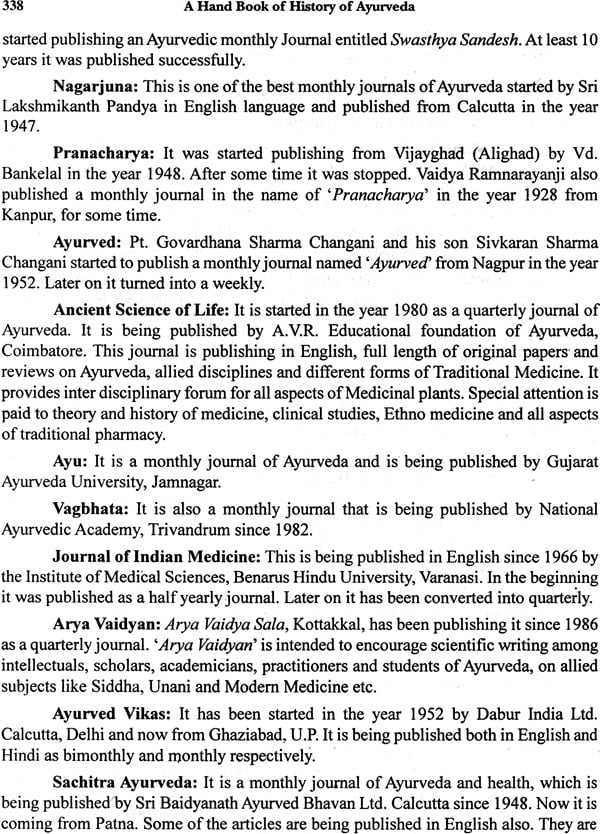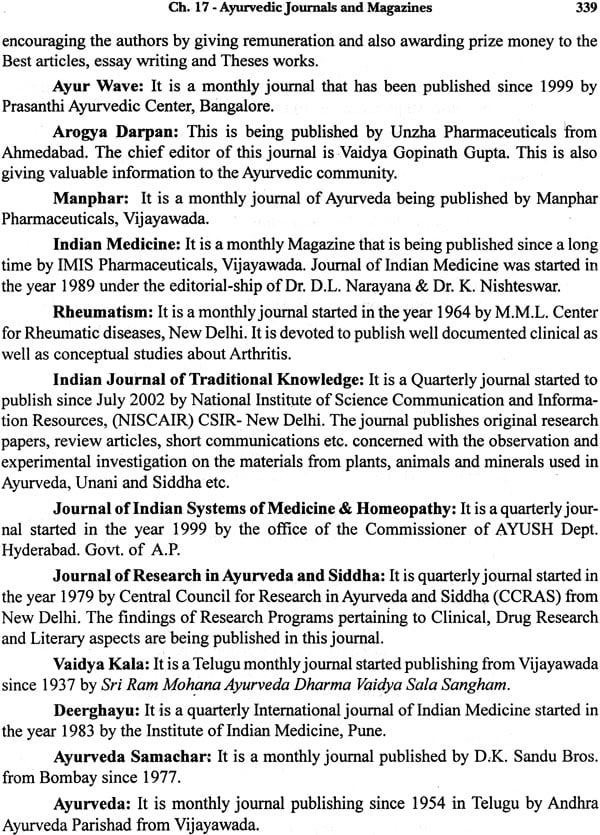
A Hand Book of History of Ayurveda
Book Specification
| Item Code: | IDJ085 |
| Author: | K. Nishteswar And Dr.R. Vidyanath |
| Publisher: | Chowkhamba Sanskrit Series Office |
| Language: | English |
| Edition: | 2013 |
| ISBN: | 9788170801427 |
| Pages: | 386 (Black & White Illustrations and Photos: 35) |
| Cover: | Paperback |
| Other Details | 8.9" X 5.5" |
| Weight | 690 gm |
Book Description
The origin of Ayurveda was attributed to Brahma, the creator of the universe by the authors of classical Samhitas. Prof. Dwarakanath commenting on the origin and development of medicine in ancient India quotes "Agnivesa Samhita refers to a period, in the history of India, when people lead a pastoral life and lived a natural life free from disease. As civic life and urban culture developed, the society is seen to have been subjected to many changes and numerous diseases, not known in the earlier ages. The earlier Vedic medicine was not equal to the challenge. The wise men of the time (the Rishis) are stated to have imported into the Indo-Gangetic plains a rational and sym- metrical medicine- the Ayurveda- from a more advanced culture. Subsequent develop- ment of medicine in the Indo-Gangetic plains kept pace with the increasing urbaniza- tion and this lasted till the Sunga - Kushan period. A time bracket for the origin and development of medicine includes the 5th millennium Be (before cultural phase of Harappa civilization ranging from 2300 Be to 1750 BC) to 4th period of Hastinapura (from 2nd century BC to 3rd century AD). The period from 3rd century AD can be named as post Ayurvedic period, after which no further or significant advances are seen to have taken place in the field of Indian medicine, on the other hand the arrest of progress and gradual decline of Indian medicine marked this period. From the point of view of-liter- ary evidence and astronomical grounds, a date of 3000 Be approximately would repre- sent the lower limit and the 3rd century AD the upper limit of the time bracket for the evolution of the rational medicine in ancient India. The period anterior to the lower limit, extending possibly beyond the 5th millennium BC may be considered to represent the period of Adikala or Pre-Ayurvedic culture."
Most of the historians have attempted to document history of Ayurveda on the basis of various periods namely Vedic period, Samhita period, Nighantu period, Moghul period, British period and Modern period.
Acharya P.Y. Sharma described the development of Ayurveda under 3 major components viz.
1. Prachina Kala -Ancient period (up to 7 th AD i.e. post Gupta period)
2. Madhyama Kala - Medieval period (8th to 15th century AD)
3. Adhunika Kala - Modern period (16th century onwards) Atridev Vidyalankar described history of Ayurveda as under.
1. Vaidika Kala - Pre-historic period (2500 BC)
2. Ramayana & Mahabharata Kala (500 BC)
| 1 | Vedic Period | 1 |
| 2 | Ayurveda in Indian-scriptures | 37 |
| 3 | Evolution of Ayurveda | 77 |
| 4 | Samhita Period | 91 |
| 5 | The authors of Sam hit as. | 101 |
| 6 | Redactors | 115 |
| 7 | Sangraha Kala | 121 |
| 8 | Brief introduction about the Acharyas of Sangraha Grandhas: | |
| 9 | Rasasastra | 157 |
| 10 | Vrikshayurveda - Pasu Ayurveda | 169 |
| 11 | The contemporary authors in the modern period | 179 |
| 12 | Spread of Ayurveda | 221 |
| 13 | Hippocrates | 241 |
| 14 | The Edicts of King Ashoka | 257 |
| 15 | Nighantus | 263 |
| 16 | Development of Ayurveda during post independent period | 273 |
| 17 | Publication of Ayurvedic Magazines & Journals and its development | 335 |
| 18 | World Health Organization | 343 |
| 19 | Important Essay and Short Questions & M.C.Q.'s | 349 |
| 20 | Annexure | |
| Annexure - I List of Commentaries and Commentators on Brihat Trayee, Laghu Trayee & Nighantus alongwith their period | 373 | |
| Annexure -II Ancient treatises on various branches of Ayurveda | 377 | |
| Annexure -III Table showing the divisions & number of chapters of Important Samhitas | 379 | |
| Annexure -IV Standard Reference Works of Ayurveda | 380 | |
| Annexure- V Alternative medical systems | 382 | |
| Annexure -VI Milestones in Medicine | 392 | |
| Annexure - VII Research & Conservation of Medicinal Plants | 398 | |
| Annexure -VIII Widening jaws of Modern Medicine | 410 | |
| Annexure -IX Details of Prestigious Ayurvedic Institutions of India | 413 | |
| Annexure -X The Popular Ayurvedic Pharmaceutical Companies of India | 417 | |
| Annexure - XI State wise details of the Institutes/Units under Central Council for Research in Ayurveda and Siddha | 423 | |
| Annexure - XII Details of Hospitals with Specialized Treatment Available Under Central Council for Research in Ayurveda and Siddha as On 1-4-2001 | 426 | |
| Annexure - XIII List of Ayurvedic Colleges, U.G. & P.G. | 430 | |
| Index | 475 |

